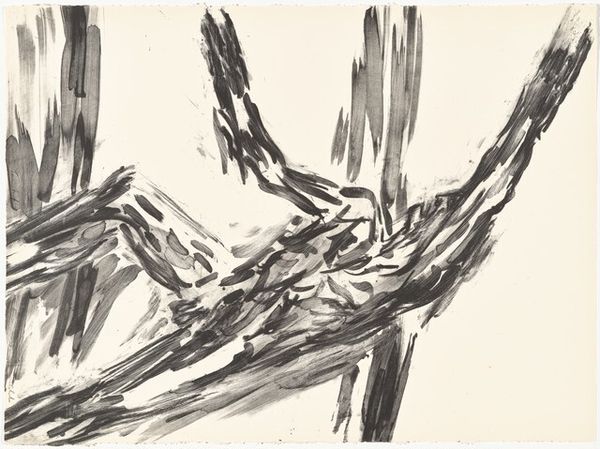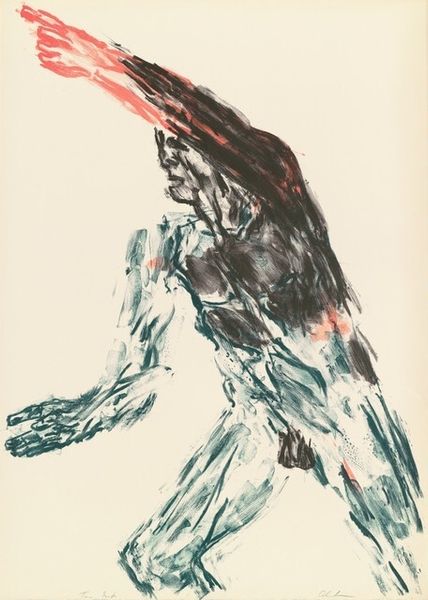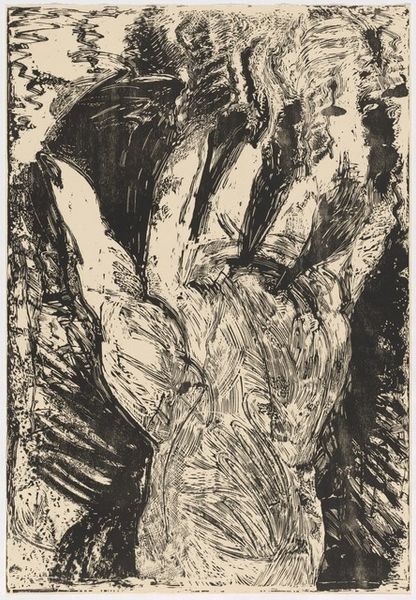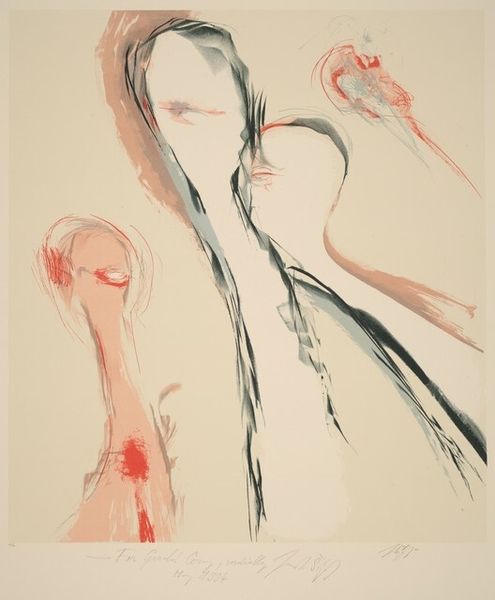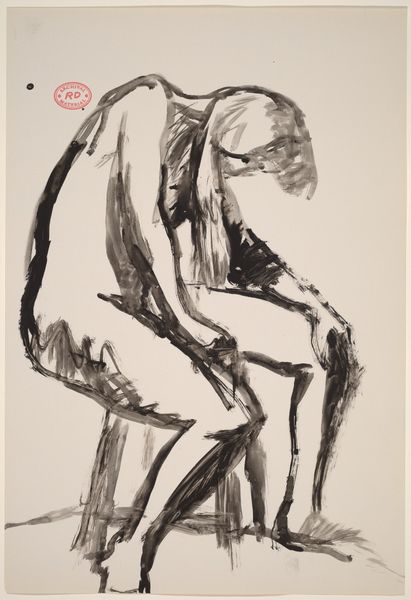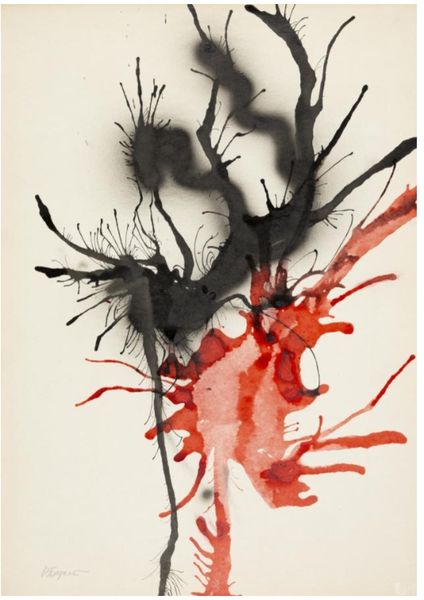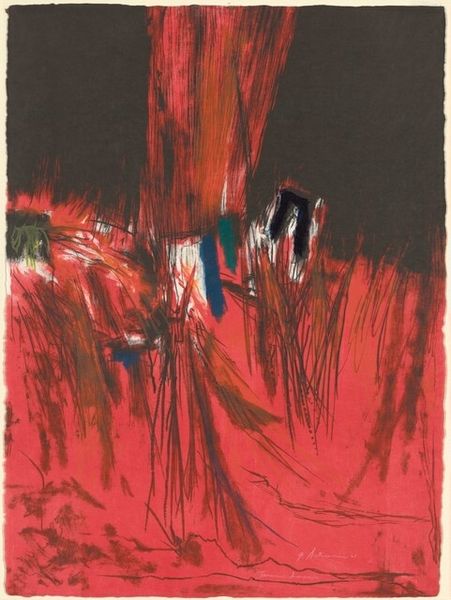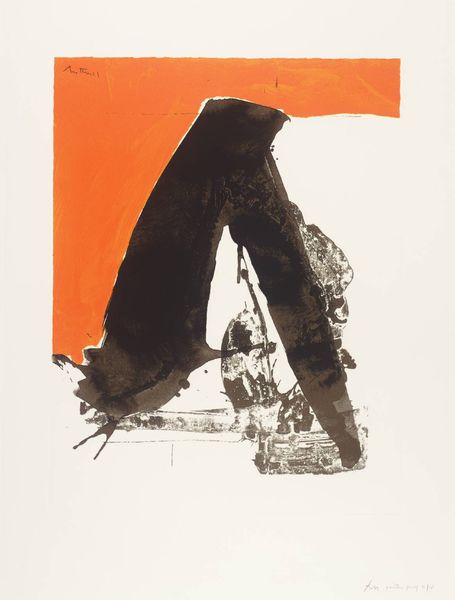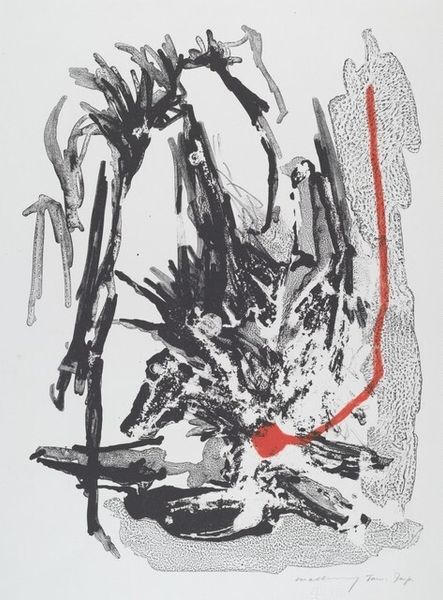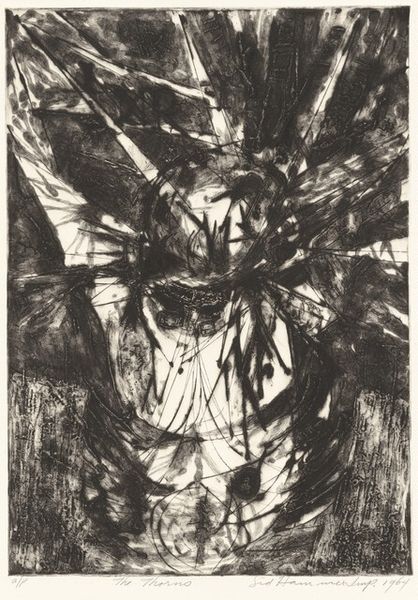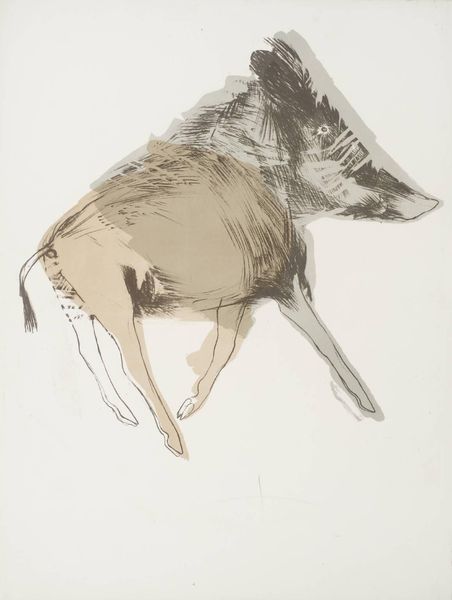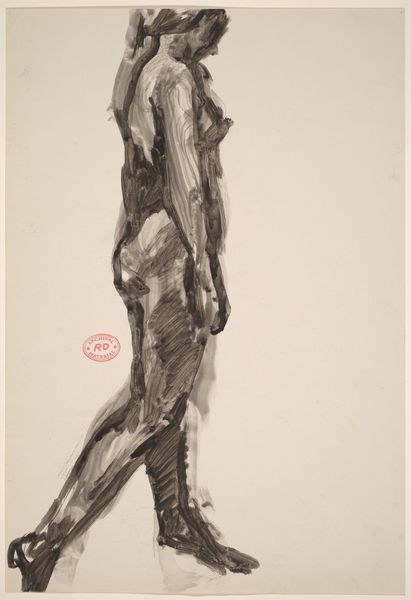
drawing, print, ink
#
abstract-expressionism
#
drawing
#
ink drawing
# print
#
figuration
#
ink
#
monochrome
Copyright: National Gallery of Art: CC0 1.0
Curator: Robert Mallary created "Suspended Figure" in 1962, an intriguing print that experiments with ink on paper. It’s both a drawing and a print. Quite fascinating. Editor: The rawness jumps out, doesn't it? Like a scream rendered in ink and splashed across a crimson sky. It has this brutal vulnerability... Are we looking at an act of violence or a birth? I feel this tension. Curator: It is suggestive, certainly. Mallary's piece emerged during a politically fraught era. Consider the growing anxieties around the Cold War and existential threats of the time. Figurative work experienced a powerful resurgence, capturing societal struggles... Editor: Oh, definitely! That blood-red wash in the background, it bleeds into the figure—almost drowning it. What I find striking, also, is that the "figure" seems almost... assembled, fragmented. He seems to be saying, look what the violence, whatever it is, has created. It is almost sculptural with that ink, and I’m also intrigued that it reads both flat and three dimensional. Curator: Precisely. Mallary experimented heavily with fragmented forms in the ‘60s, particularly in the medium of sculpture. And yet this return to the printed line allows the figure to become something graphic. Almost reminiscent of Goya. One may easily forget that "printmaking," even seemingly expressive work like this, operates within systems of reproduction. There's the matrix of the block, the press itself, and of course the paper. Editor: It brings the weight and depth and history of that era rushing to the surface of something very flat—like the memory of a wound that won't quite heal. "Suspended Figure" stays suspended—unable to move. Are we dealing with the individual or with the collective state of being, I keep asking myself. Curator: A crucial question indeed. That unresolved tension, its forceful visual impact combined with his approach to form, suggests a sustained artistic engagement with the public's anxieties of that time. It's interesting how abstract expressionism started taking on these darker hues. Editor: Dark and utterly haunting. You know, reflecting on this raw ink work has kind of infected me in the best way possible... almost compels me to go get messy in the studio and not hold back! I now have the feeling that that’s what Robert Mallary would've loved most of all to inspire.
Comments
No comments
Be the first to comment and join the conversation on the ultimate creative platform.
